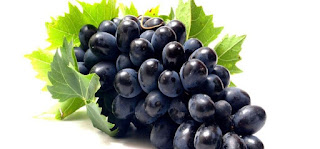We did include one vintage each of the Gaja/Graci Idda Bianco and Rosso wines in order to allow cross-producer assessments in common growing zones.
Wine #2. Benanti La Morèmio Brut Rosato 2020 (Nerello Mascalese (NM) from S slope)
Faint strawberry and yeast on the nose. Whisper of bubbles on the palate. Bright acidity. Wine-like.Broad on the nose and palate. Mineral, salinity, and spice.
Wine #2. Benanti Contrada Rinazzo Etna Bianco Superiore 2021 (C from E slope)
Herbs and stemminess on the nose. Salinity, acidity, and minerality on the palate.
Eric saw this as having a full to minimal fruit component and a short mineral expression. He thought it would pair well with a seafood medley.
Sean — Floral nose. Bigger taste than the Etna Bianco. Syrupy. May be too young, or needs more time to really enjoy. Citrus.
Wine #3. Benanti Pietra Marina Etna Bianco Superiore 2017 (C from E slope)
Mineral on the nose and palate. Lime skin on the palate.
Eric saw this as having a full fruit component with lime Margarita on the nose. Dry with light to medium minerality.
Sean — Very nice. Favorite thus far. Silky. Good acid. Another good one for food pairings. Mineral.
Wine #4. Benanti Contrada Cavaliere Etna Bianco 2021 (C from S slope)
Thyme and herbaceousness on the nose. High acid and salinity on the palate.
Eric -- High salinity. Slightly unbalanced. Short finish.
Sean — Golden in color. Florals and tangerine on the nose. Dry. Good acidity. A nice food wine. Nice flavors. Almond paste on the palate. A bit of licorice also. A bit of some salinity, which makes it more interesting. Fav wine.
Wine #5. Gaja IDDA Bianco Sicilia DOP 2021 (C from s slope)
Mint and minerality on the nose. Smooth on the palate with good acidity and a great round mouthfeel. I take back everything bad I have ever said about this label.
Eric got baked pineapple, mint, and tropical fruit skins on the nose. Balanced with base lines of salinity, acidity, and minerality. High palate finish of fruit.
Sean — Good. Apricotish, with maybe apples. Nice acid, so another food wine. Some minerality, which I do enjoy.
The wines from the different slopes were characterized by salinity, acidity, and minerality with the southwestern slope exhibiting a little more fruit and salinity.
Flight 3: Etna Rosato
This wine was not tasted at the dinner as it slipped through the hands of the Somm (That's you Al). However, we took it to lunch a few days later. Strawberry and minerality on the nose and these carry through to the palate along with tamarind and salinity. Long, mineral finish.
Flight 4: Etna Rosso
Slate and red fruit on the nose. Tannic on the palate along with tomato flavors and a full round mouthfeel.
Eric posits ripe raspberry, and tomato peel. Slow on the mid-palate. Cioppino would be the ideal pairing.
Sean -- Violet floral notes on the nose, tar on the palate. Not terribly into this one.
Wine #2. Benanti Contrada Dafara Galluzzo Etna Rosso 2021 (NM from N slope)
Assorted boxed chocolates as it relates to aromas (Eric). Smooth, grippy tannins. Deep, ripe red fruit. Dried cranberry. Fresh, sunny, bright red blend.
Wine #3. Contrada Calderara Sottano Etna Rosso 2021 (NM from N slope)
Black fruits and spices with evident tannins. Long fruity finish.
According to Eric, full body with a velvet smooth finish.
For Sean: Tannic. Could be good with red meat. Good with food -- something spicy. Dark cherries on the mouth.
Wine #4. Benanti Contrada Monte Serra Etna Rosso 2020 (NM from SE slope)
Eric -- Immediate sweet red licorice , candied cherry, and simple syrup on the nose. Tight, sharp tannins on the palate with lively, "popping" fruit on the finish.
Wine #5. Benanti Contrada Cavaliere Etna Rosso 2021 (NM from SW slope) — Santa Maria di Licodia
Red fruit, herbs, and spice on the nose. Medium-bodied. Ripe tannins and lengthy finish.
Wine #6. Benanti Nerello Cappuccio Terre Siciliane Rosso 2021 (NC from SW slope) — Santa Maria di Licodia
Dried flowers and cherries on the nose. Medium-bodied with an ephemeral finish.
Eric -- Ripe, pleasant cherry. Short finish with notes of black and red pepper and faded cough syrup.
Wine #7. Gaja IDDA Etna Rosso 2021 (NM from SW slope) — Biancavilla
Violets and black cherry on the nose. Ripe fruit on the palate. Low acidity. Smooth.
Eric -- Wet tobacco on the nose. Moroschino cherry, mint, slate minerality, and faint cough drop on the palate.
Flight 5: Rosso Riserva
Wine #1. Benanti Rovittello Particella No 341 Etna Rosso Riserva 2016 (NM (90%) & NC (10%) from N slope)
Focused, with notes of florality, ripe fruit, and spice on the nose. Concentrated and balanced on the palate. Mineral with a lengthy finish.
Eric -- Rich red fruit. Tannin-dominant.
Wine #2. Benanti Serra Della Contessa Particella No. 587 Etna Rosso Riserva 2016 (NM (85%) & NC (15%) from SE slope)
Elegant. Ripe red fruit and mineral on the nose. Medium-bodied with light tannins and a lengthy finish.
Eric -- Full red fruit with slightly stewed components and spice.















